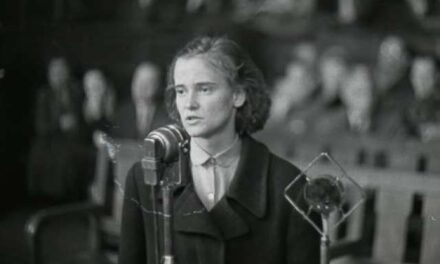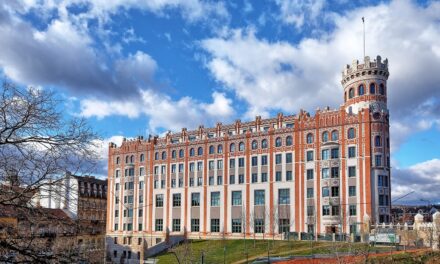"A nation that does not know its past does not understand its present, and cannot create its future!"
Europe needs Hungary... which has never let itself be defeated.
The development of the armed struggle
The Brezán Proclamation issued on May 6, 1703 is a document of historical significance, with which Rákóczi, in addition to the forces of the order and nobility, also called a part of the serfs to the forming Kuruc army: "We, Prince Ferenc Rákóczi of Felsővadász and Count Miklós Bercsényi of Székesi, all true Hungarians, We wish all the good from God to the true Hungarians, ecclesiastical and secular, noble and gentile, arms-bearers and home-dwellers, who yearn for the old, glorious freedom of our patriotic and sweet country. It cannot be so Hungarian that the cruelty, apportioning and impossibly taxing harassment of a foreign nation, which has so far been unlawfully ruling Hungary against God and justice, and incapacitating all order, the tearing of our free law, the contempt of our nation, our freedom, and the mockery of those already underfoot he couldn't have felt it and he wouldn't have understood it..."
He had Rákóczi flags made, which were symbols of the freedom struggle throughout.
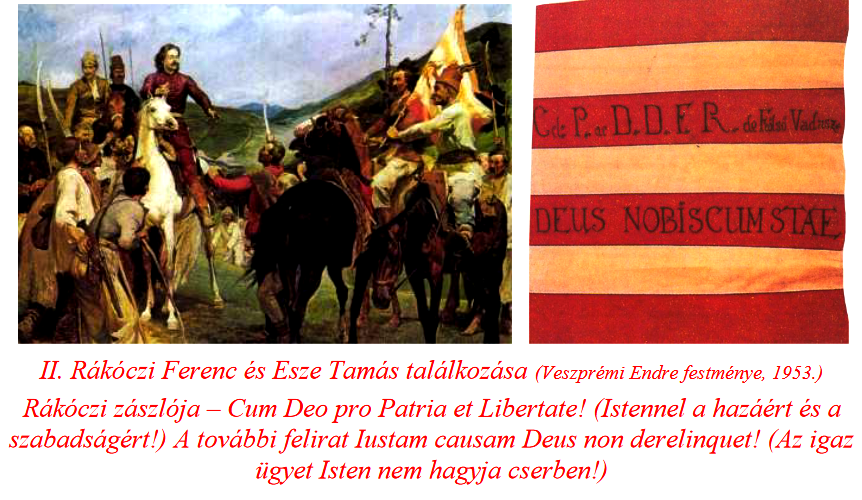
Rákóczi was still on Polish soil when the rebellious Hungarians tore down flags in the markets of Tarpa, Beregszász and Vári. The insurgents Sándor Károlyi, the Szatmári chieftain, who was aware that this had put an end to similar rebellions. When the prince first saw the insurgents on the Polish-Hungarian border, he was frightened. He knew that the battle could not be fought with the unarmed, ragged, uneducated, undisciplined mass of serfs. Rákóczi, with his political and military skills and the cause of Hungarians at heart, formulated the words that became the guarantee of success for years: "... if someone takes up arms to liberate the poor Hungarian nation from the yoke, they will be exempted from all kinds of duties and taxes." His words spread like wildfire, at first only in the eastern part of the country, and worked wonders. The fighting has begun.
However, a clash under Munkács Castle almost ended in tragedy. was saved by a János Majos Count Quirini . The first serious battle took place on July 7, 1703 at Tiszabecs. The four-hour clash finally ended with a narrow victory, which gave a huge impetus - primarily due to its moral effect - to further fights. (Tiszabecs is located in the present-day Hungarian part of the Tisza. Opposite it, on the border of Tiszaújlak, which is now part of Ukraine, stands the Turulos monument, which announces the first major victory of the Kurucs.)
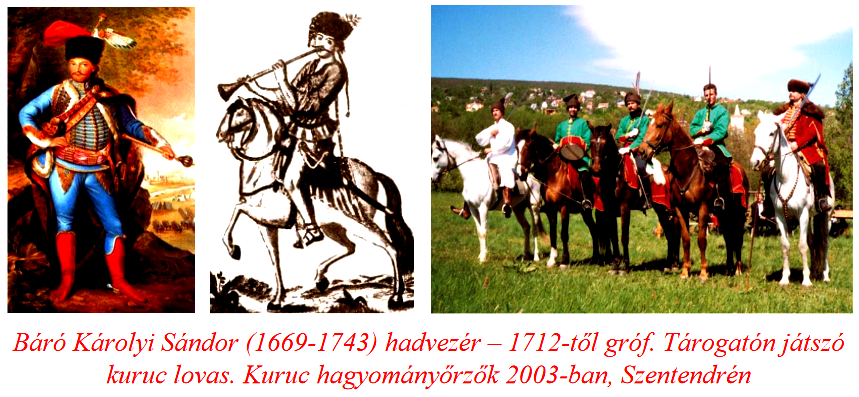 It was bad news, however, that the renowned general of the time, Montecuccoli , set off from Munkács Castle after Rákóczi to liquidate the Kuruc army that was still being organized. At that time, the vast majority of the nobility did not join the prince, because they did not trust in victory. However, when two hundred serfs led by Tamás Esze On June 16, 1703, Rákóczi crossed the Hungarian border at the Vereckei pass with an army of three thousand men. László Ocskay and Balázs Borbély, who had transferred from the imperial army, joined the Kurucs with a capable team. Miklós Bercsényi soon arrived with his army of about 600 men, mainly Poles.
It was bad news, however, that the renowned general of the time, Montecuccoli , set off from Munkács Castle after Rákóczi to liquidate the Kuruc army that was still being organized. At that time, the vast majority of the nobility did not join the prince, because they did not trust in victory. However, when two hundred serfs led by Tamás Esze On June 16, 1703, Rákóczi crossed the Hungarian border at the Vereckei pass with an army of three thousand men. László Ocskay and Balázs Borbély, who had transferred from the imperial army, joined the Kurucs with a capable team. Miklós Bercsényi soon arrived with his army of about 600 men, mainly Poles.
Rákóczi's plan was to march through the Highlands to Vienna, where, according to the plans, he would have united with the Franco-Bavarian troops coming from the west, encircling the imperial forces. However, the number, unity, and fighting spirit of the force still proved to be insufficient for victory.

Rákóczi, who was staying in Vásárosnamény, therefore issued the Nemény patent in time - on July 18, 1703 - for the nobility. True, this was followed by the Gyulaj patent issued ten days later in Nyírgyulaj, in which he forbade the serfs to attack the nobility and their manor houses. The nobles who fled to the castle of Kisvárda at the call of leader Kuruc, who warned them of their ancestral duty to protect the homeland, slowly began to infiltrate Rákóczi's camp. By acquiring the Ecsed estates, the prince was able to equip his ever-growing army. All Kuruc soldiers received uniforms, weapons, and provisions. Staying in Sámson (today Hajdúsámson), Rákóczi found that the Hajduks reluctantly sided with the cause of the freedom struggle. They were only willing to stand among the Kurucs if Rákóczi occupied Kálló. When this happened, the prince ordered the Hajdú towns to stand under the Kuruc flags. The number of the army increased rapidly, but due to their supply and growing social tensions, they caused a serious problem for the military leadership. The serfs did not want to work citing the Brezan proclamation, but the complaints and problems of the nobles increased in direct proportion to this. Rákóczi, who was currently in Vetés, issued his third most important decree, the so-called sowing patent, on August 28, 1703. This stated that serfs fighting in the army were exempted from taxes, while those who stayed at home were obliged to work and pay taxes.
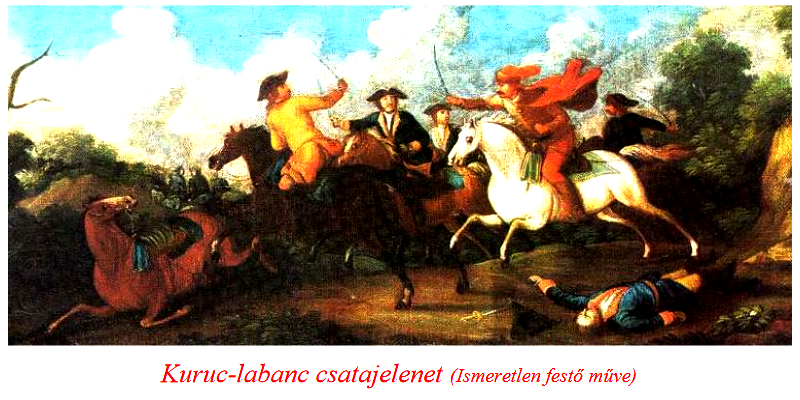
The news of the patent gave wings to the insurgents. The series of victories of the Kuruc armies continued in the Highlands and Transylvania. It was to the great satisfaction of the prince when the lord of Szatmár, Sándor Károlyi, also sided with the Kurucs.
A plan to widen the freedom struggle
Rákóczi knew that he could count on support for the Hungarian cause from three countries. From France, Poland and the remnants of the Turkish Empire. Vienna was forced by the War of the Spanish Succession to withdraw most of its troops from the country, which were redeployed to northern Italy and along the Rhine. Only 30,000 imperial soldiers remained in Hungary.
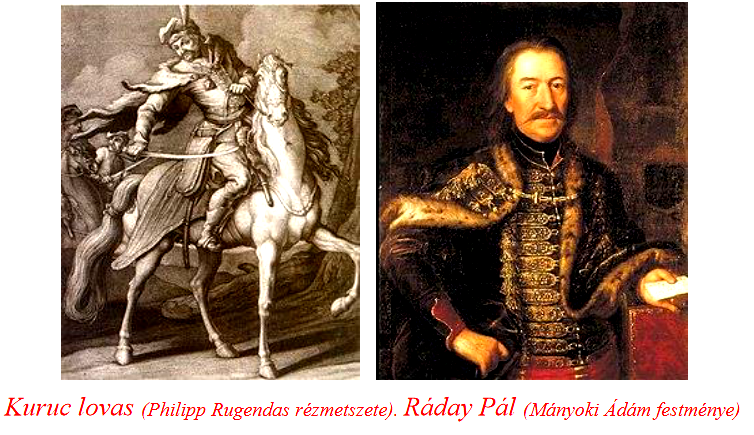
Rákóczi, although he was not an outstanding general, recognized the political and strategic situations exactly, and most of the time he knew what to do. He was popular with nobles and serfs, the secret of which lay in his open honesty. He was able to speak to his people and soldiers in such a way that no one doubted his words. The prince also excelled in the selection of military leadership and clerical staff. In October 1703, Rákóczi met the 26-year-old clerk of Nógrád County, Pál Ráday . Rákóczi accepted Rákóczi, who was intelligent, educated and had a wide knowledge of languages, as his secretary, who was the best connoisseur of his correspondence and plans, and after a while became his creator.
Events of the year 1704
In 1704, the Hungarian War of Independence and the events taking place on the European battlefields reached a significant turning point. On August 13, in the Battle of Hochstadt, the Habsburgs won a victory over the Franco-Bavarian armies. Thus, Rákóczi's dream went up in smoke for a while, as the Bavarian-French force that came to his aid, which the Kurucs were expecting, was forced to flee. This was bad news because at the beginning of 1704 the eastern part of the country was already under the control of Rákóczi. After the occupation of Tokaj, the number of his followers continued to grow. The great work of state organization was carried out by the princely court in Miskolc. Among other things, they established the Court Council, which was the governing body of the country until 1705. It was here that the famous manifesto formulated by Pál Ráday, Recrudescunt diutina (The old wounds of the noble Hungarian nation are resurfaced...) was issued, with which Rákóczi actually addressed the peoples of the world. appointed Ádám Vay , his long-time trusted and loyal man, to head the princely court.

In Miskolc, they organized, among other things, the recovery of the country's economic life. There was a severe punishment if anyone touched any of the country's property. They reopened the mines and urban workshops, making trade profitable. They tried to resolve the religious tensions, as many Protestant leaders of good ability were also appointed to positions in the court council alongside the Roman Catholic leaders. (Let's not forget that the great-grandfather of Ferenc Rákóczi, who had a strong Roman Catholic faith, György I. Rákóczi Zsuzsanna Lorántffy , who founded Protestant schools and printing houses .) Not to mention the composition of the army, since in the eastern ends the majority of nobles and serfs believed in the Reformation. The fact that the hated Habsburg partisans were Catholics also played a role in this. Even in these years, there were bloody clashes between Hungarians and Hungarians over individual churches. Rákóczi brought a strict patent to resolve the religious conflicts, which was successful. In 1704, Vienna realized that the Kurucs had to be seriously reckoned with, that is, they had to negotiate with Rákóczi. All the more so because the outposts of the Kuruc troops already crossed the Transdanubia in the fall of 1703. were directed by the former imperial officer, János Bottyán known and referred to as Vak Bottyán
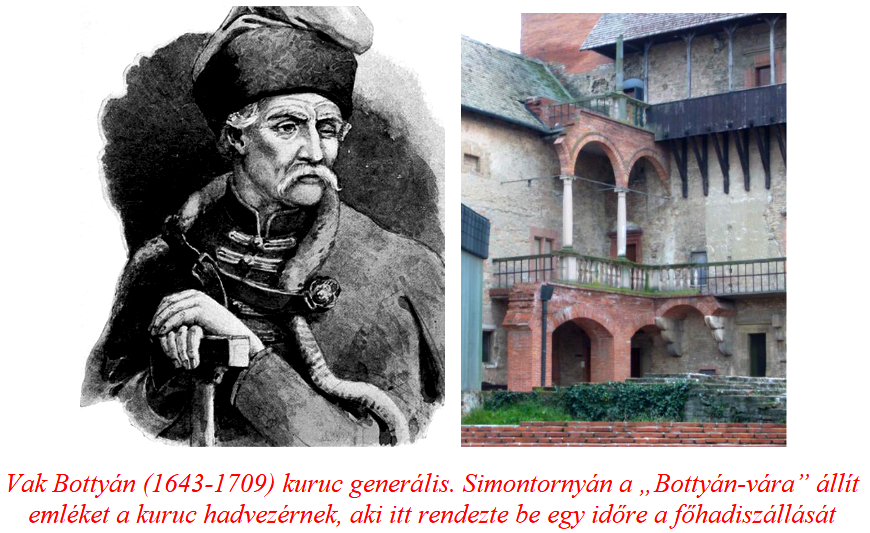
The year 1704 was a period full of political and military upheavals. Rákóczi himself set off from Eger at the head of his army towards Transdanubia to occupy the base areas of the Labanci after the eastern parts of the country. To prevent this, Vienna appointed the excellent Austrian general, Siegbert Heister , to lead the Habsburg armies across the Danube. Among other things, the Transdanubian Hungarian nobility was made insecure by the fact that the Austrian counterattack was prepared by Jenő Savoyai
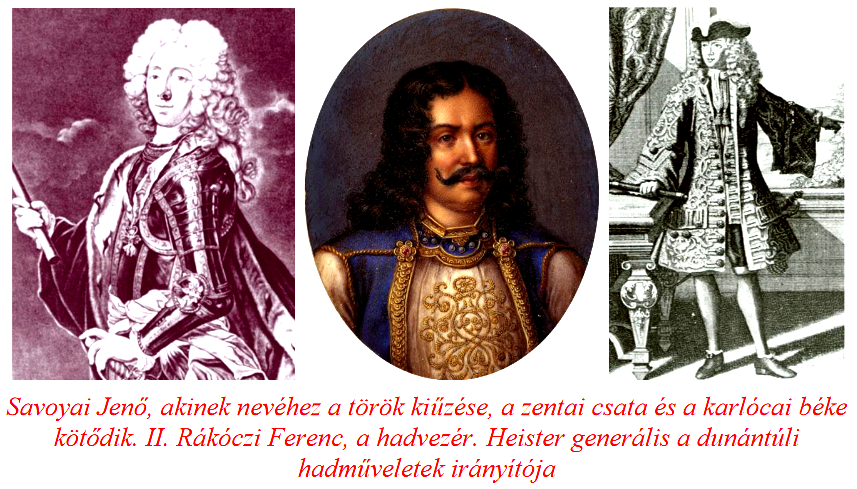
On May 28, 1704, the Kurucs won a brilliant victory near Szomolány, and a few days later they suffered a heavy defeat at Koroncó due to the quarrel of the Kuruc generals Antal Esterházy and Sándor Károlyi Simon Forgách , the imperial general who defected to the Kurucs in April 1704, was also involved in the destruction of the 18,000-strong Kuruc army. However, it is a fact that the invasion of Transdanubia was delayed due to the defeat. The series of failures was multiplied by the fact that the ancient enemy of the Hungarians – who at that time was exchanging the Turkish uniform for imperial clothing – destroyed the Hungarian population along the Danube and the Great Plain. In the summer of 1704, Rákóczi pushed out the grids now serving Vienna as far as Titel. However, the strained work made the prince bedridden for a while, who could only be cured by a doctor who came to him from the Highlands. Meanwhile, while Rákóczi led the campaign against the Rács, the Transylvanian orders elected Gyulafehérvárt as their prince on July 8, 1704. In the meantime, it turned out that out of the three possible allies mentioned earlier, neither the French nor the Turks were able or willing to help. However, it was a problem that, for example, the cities of Szeben, Szamosújvár, and Szatmár were still in imperial hands, so they could attack the Hungarians from there at any time. In addition, the attacks of the Transylvanian Saxons, who had stood by Vienna all along, had to be expected.
Rákóczi captured the town of Érsekújvár in December 1704, but the subsequent defeat at Great Saturday spoiled the military successes achieved so far in the highlands. It was this year that Rákóczi issued the copper coin, which was called congo in contrast to the silver blade, and libertarian after the inscription "Pro libertate" written on it.
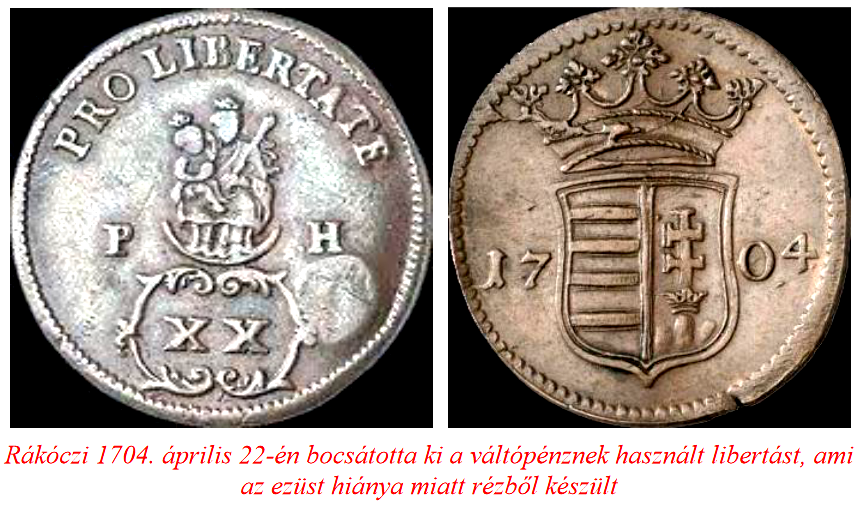
1705-1707. annual events
The first years of the freedom struggle filled the prince and his followers with hope, despite the fluctuating military achievements. When the Hungarian-hating Lipót I the insurgents had to negotiate with a less anti-Hungarian king in the person of József I , who ascended the throne in his place In July 1705, the prince gave a speech in Gyömrő, which gave the freedom struggle a new impetus. However, while Vak Bottyán's armies conquered most of Transdanubia, the freedom struggle in Transylvania took a bad turn. Imperial Field Marshal Ludwig Herbeville and the inactivity of Kuruc leader Sándor Károlyi The significance of the Battle of Zibo can be seen in the fact that the principality fell into the hands of the Habsburgs,
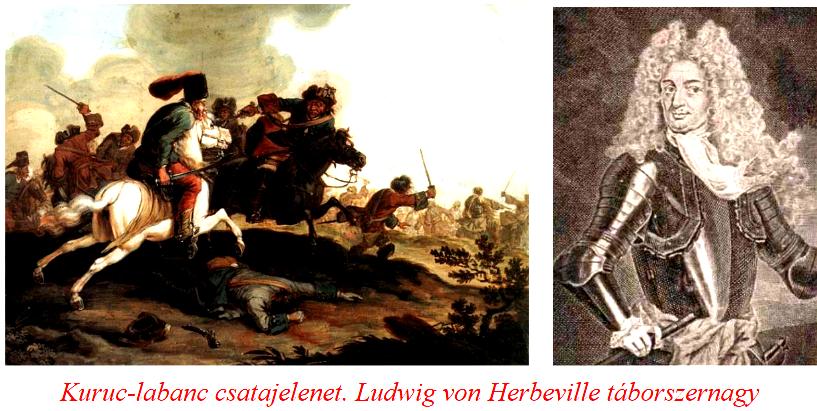
The war of independence reached its peak in 1705-1706, when the Kuruc army numbered, according to some estimates, 70,000 people. Among the nationalities, the Ruthenian serfs (the people of Rákóczi) were the first to join the insurgents. However, the citizens of the cities of Sepeszé, the cobblers, the Slovaks from the highlands and a small part of the Romanians from Transylvania lined up next to Rákóczi. (It should be noted that these nationalities joined only in the areas that formed the base areas of the freedom struggle.) Among the nationalities that joined, the Vend (Slovenian) population of the western part of the country, as well as the population of Lendva and its surroundings, should also be mentioned. In addition to the refreshing exceptions, the vast majority of the nationalities were still in the service of Vienna. In particular, a lot of Hungarian blood was shed by the Ráci, the Croats, the Oláhs and the Transylvanian Saxons. (It should be noted that, in addition to Vienna, many European countries also took up arms. The role of the Danes should be highlighted. Several Danish regiments fought on the Western European fronts, but a regiment was also deployed in Hungary against Rákóczi.)
The discipline of the Kuruc army was strengthened by the Military Regulation issued on May 1, 1705, which introduced strict conscription instead of voluntary service. There was great confusion within the army as well, since Protestants and Catholics, nobles and serfs, commoners and officers, tax payers and tax collectors attacked each other after one exchange of words. Complaints poured in from the whole country to Rákóczi, who did a superhuman job to maintain order. In particular, the economic difficulties caused almost insurmountable tasks for the prince. In these circumstances, the first parliament was convened in Szécsény for the period between September 12 and October 3, 1705, in which they tried to help with national problems. At the assembly, Rákóczi was elected the ruling prince of Hungary, and the orders entered into a confederation. A 25-member senate was elected alongside the prince, and István Sennyey, landowner of Zemplén, became the chancellor. The Economic Council was also established. Coinage and mining became the authority of the prince, the Council could decide on other matters.
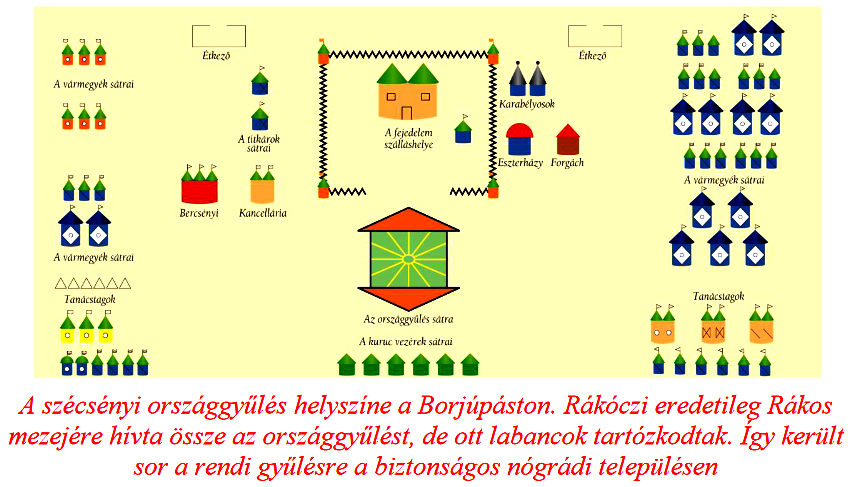
Despite the sharp disputes and conflicts of interest, as well as the absence of lords who stayed away, and the Transdanubian nobles who moved to Vienna, they were able to decide on a number of important matters. In addition to the above, religious conflicts were settled when decisions were made on the affiliation of churches. They decided to start peace negotiations. On October 27, 1705, on Great Saturday, Ferenc Rákóczi sat at the negotiating table with the emperors. An agreement could not be reached for two reasons. Vienna demanded Transylvania, which, however, the prince refused to give up. The other reason, which Bercsényi insisted on, was to restore the resistance clause of the Aranybulla, abolished in 1687. But Vienna was not willing to do this. In 1706, it became obvious that it was not possible to make peace with Vienna, because none of the Hungarian interests were willing to be taken into account.

It was a problem that the Croatians rejected Rákóczi's invitation and instead believed in the false promises of Emperor József I. (Rákóczi might have remembered that just a hundred years ago, Bocskai was able to dictate the terms of peace to Vienna. Now the situation was not so favorable.) In the spring of 1706, Sarolt Amália was able to meet her husband in Nyitrán. Vienna released the princess on the condition that she persuade her husband to make peace. During their cheerful time together, Amália Sarolt did not even try to persuade her husband, who was in his thirties, to accept the Vienna demand. The main thing for them was that they could meet. After that, the court sent Julianna Rákóczi Julianna also returned to Vienna unfinished. Julianna and Ferenc felt and knew that they had just met for the last time. (They also mourned their mother, Ilona Zrínyi , who died in 1703 in distant Turkey.)
Rákóczi captured Esztergom at the cost of great sacrifices, which was then easily recaptured by the emperors. Meanwhile, the prince was already on his way to Kassa, because the news spread that Rabutin de Bussy, the talented Austrian general, had begun the siege of the city. Kassa was not just one of many cities. It is the central place of the Rákóczi estates, an outstanding fortress of Hungarian history, which, if it fell into Austrian hands, would have been the most painful loss for the Kuruc leader. Upon hearing the news of Rákóczi's arrival, the emperors retreated to Tokaj, where the Labancs took refuge among the vines that had just turned to fruit. To their loss, because the wine, the sweet grapes, the water of the Tisza, the cold nights caused greater losses to the imperial army than the battles. The outbreak of dysentery destroyed two thousand of Rabutin de Bussy's soldiers. In the meantime, on November 6, 1706, near Győrvár in Vas County, Imre Bezerédj and Ádám Béri Balogh , the Kurucs won a brilliant victory Heister , who was also taken prisoner. However, in the last months of the year, the emperors again launched successful counterattacks, and the Kurucs, as so many times before, were unable to take advantage of their advantage.
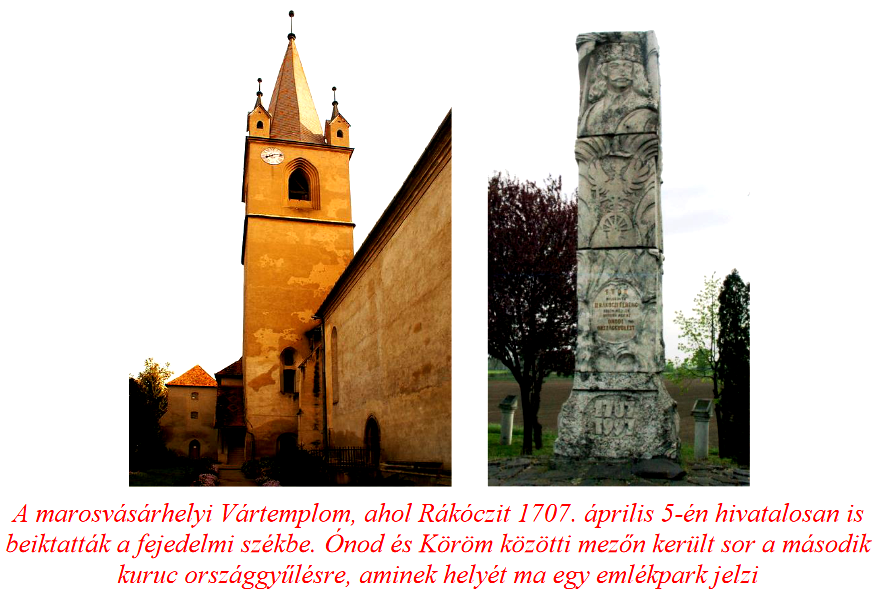 In January 1707, Rákóczi convened the Court Council in Rozsnyo, where the Kuruc staff decided to take significant political and military steps. The ruling prince then traveled to Transylvania, and in Marosvásárhely, starting on March 28, he commanded a parliament that lasted almost a month. Both in Transylvania and in Hungary, a part of the nobility thought in two ways, as their interests demanded. The trouble was compounded by the fact that the prince sentenced many nobles to caning and imprisonment. Entire counties opposed Rákóczi, because they were unable to understand that the nation's interest was not the same as their own, which arose solely from their noble privileges. The main and most opposition was caused by the taxation of the nobles. For them, this was unacceptable.
In January 1707, Rákóczi convened the Court Council in Rozsnyo, where the Kuruc staff decided to take significant political and military steps. The ruling prince then traveled to Transylvania, and in Marosvásárhely, starting on March 28, he commanded a parliament that lasted almost a month. Both in Transylvania and in Hungary, a part of the nobility thought in two ways, as their interests demanded. The trouble was compounded by the fact that the prince sentenced many nobles to caning and imprisonment. Entire counties opposed Rákóczi, because they were unable to understand that the nation's interest was not the same as their own, which arose solely from their noble privileges. The main and most opposition was caused by the taxation of the nobles. For them, this was unacceptable.
In 1707, the parliament of Ónod took place under such circumstances. The national assembly convened for May 1 took place just in time for the spring work. Moreover, as a result of the flood, only the Köröm field along the Sajó remained dry, and there the prince was able to open the parliament on May 24, 1707.

On June 6, 1707, a bloody event took place, when the ambassadors of Turóc county criticized Rákóczi because of the depreciating copper money, and he therefore threatened to resign. The outraged Bercsényi and Károlyi beheaded two ambassadors. Rákóczi stopped the further carnage. A number of important decisions were then made at the Parliament. Among other things, they voted for "public health insurance". Rákóczi was the first in Hungarian history to name the concept in Hungarian. The unified Kuruc military regulation was enacted into law. Furthermore, the most well-known historical decision, the dethronement of the House of Habsburg, was pronounced. The famous exclamation of Miklós Bercsényi refers to the important event: "Eb ura fafó! From today József is not our king!" It is mentioned less frequently that independence from Vienna was achieved in XIV. Louis of France advocated it because, as he explained, he could not enter into an open alliance with a province of the legitimate Habsburg Empire (Hungary). Despite the break with Vienna, the French did not make an alliance with Rákóczi's country, but rather encouraged the prince to make peace. This was a huge disappointment to the kuruc leaders, which demanded further measures. The fact that he promised serfs in the military the freedom of secession, the fact that he reconfirmed the tax liability of nobles, city citizens, and church members, the fact that this tax system was unique in the whole of Europe, caused recognition in several countries. Unfortunately, that didn't help either. Nevertheless, the Ónod Parliament was a turning point in the history of the freedom struggle.
Another event took place in May 1707, which occupied European politicians and princes from Paris to St. Petersburg. Rákóczi was fortunate to receive Péter I , who promised the Hungarian prince the alliance of his country and the Polish throne. (As if Zsófia Báthory , the grandmother's dream had come true when she wanted to see her grandson on the Polish throne.) XIV. However, Lajos did not take kindly to this. As in all cases in previous centuries, and in later times as well, the good-faith Hungarians were tricked, exploited, and used only as a protective shield.
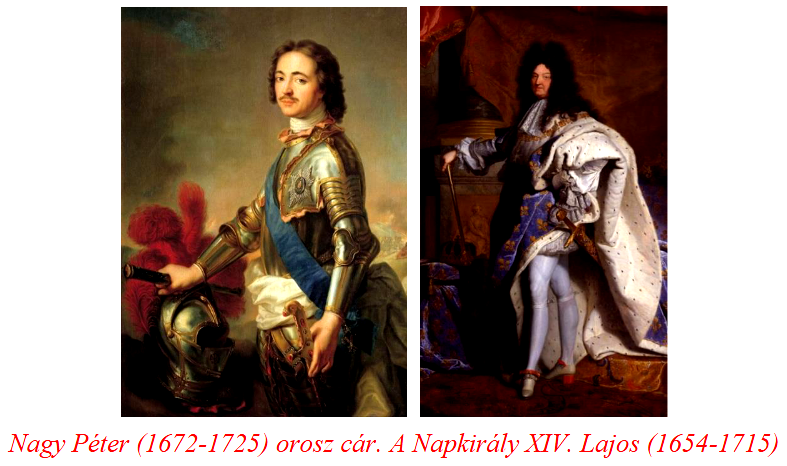
The year 1708 ended successfully for the Kurucs, because even though Transylvania fell into the hands of the Habsburgs, Rákóczi ruled Transdanubia and the Highlands. The historical significance of the Ónod Parliament lies in the fact that a seven-century-old structure was dismantled when the economic foundations were placed on the public burden. (True, it was only nearly a century and a half later, in 1848, that this was finally enacted into law.)
1708-1710. annual events
In the year 1708, two national assemblies took place, at which, even if no substantive decisions were made, the fate of the freedom struggle was decided. The first dispute was held in Bratislava, which lasted from the end of February to June 1708. The Kuruc leaders also held a meeting in Sárospatak between November 28 and December 20, 1708. At both meetings, only the lamentations of the nobles were heard, so the deliberations broke up without a conclusion. Meanwhile, the morale of the Kuruc army dropped, valuable shipments disappeared on the roads, and Rabutin 's imperial army ran amok in Transylvania. (Among the general's misdeeds, he set fire to the valuable library of the already renowned Enyedi College, which burned to the ground.) We must also mention the inglorious death of Tamás Esze, which happened at the very time when he received a nobility from Rákóczi. In Nitra in May 1708, two hajdú regiments fell to each other. Tamás Esze galloped between them to separate them, while he was fatally stabbed. It is possible that Tamás Esze was a victim of provocation.
On June 15, 1708, Rákóczi set off from Eger with his well-equipped army of ten thousand men on a campaign, the purpose of which was secret. Later it turned out that the destination was Silesia, where Rákóczi wanted to help the Prussians fighting against the Habsburgs, paving the Vilmos Frigyes to the Hungarian throne. In 1708, another plague swept the country. Rákóczi was also confined to his bed by the disease, and he was only able to continue his journey after a long period of care. Unfortunately, however, he met László Ocskay and other leaders, who diverted him from his original destination. The army leadership, which was becoming uncertain and disputing, directed the well-equipped army of fifteen thousand men under Trencsén. Just then Heister with his 8,000 horse army.
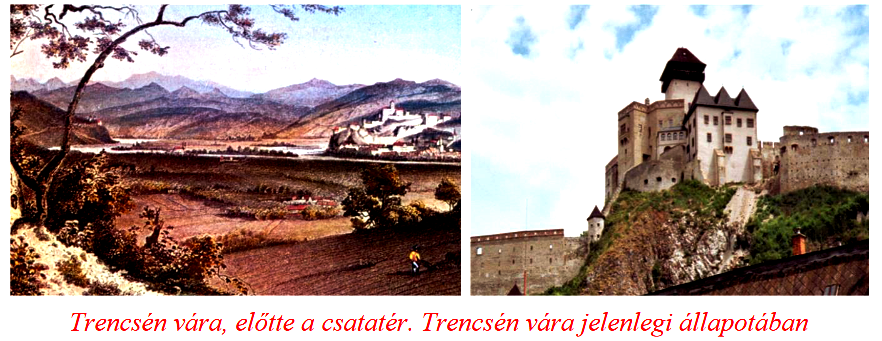
The twice-outnumbered Kuruc army chose the worst possible terrain for the clash, which Heister immediately noticed and took advantage of. The Kuruc military leadership also noticed the mistake, but it was too late. The decrees revoked during the battle caused complete confusion. Rákóczi personally wanted to turn back the fleeing Kuruc army, but his reckless action almost cost him his life. His horse stumbled, and the prince lay unconscious on the ground with his face covered in blood, a few meters from the imperial horsemen. It was thanks to Rákóczi's two little ones and some of his bodyguards that he got out of the dangerous situation alive. The news that the prince had died spread like horror. The military order broke down, the officers separated from their troops, the Kurucs fled headlong. The only general János Bottyán , who could have helped, was still on his way to Trencsén. The battle of Trencsén was the most shameful defeat of the Kurucs in terms of the balance of power and equipment during the eight years. The wounded Rákóczi returned to Eger in mid-August from the emperors who were pursuing him. The Kurucs also suffered another - primarily moral - blow when they were faced with the fact that the talented Kuruc brigadier László Ocskay had defected to the side of the emperors with his regiment. (Ocskay was later captured and executed for treason in the main square of Érsekújvár in January 1710.) In 1708, one month later, the Kurucs Ádám Béri Balogh gave a resounding response to the defeat in Trencsén. At Kölesd, a force of 4,000 men was smashed so that nearly 2,000 enemy soldiers were left dead on the battlefield. The prince tried to help the resulting chaotic situation when he convened the aforementioned Sárospatak parliament. (Following the execution of Ocskay, another execution took place one year later, on February 6, 1711. The emperors captured the legendary Kuruc Brigadier Ádám Béri Balogh, and although Rákóczi, among others, asked in vain for the exchange of prisoners, Vienna did not allow it. It was considered a political matter, and to set an example, the Kuruc leader was executed.)
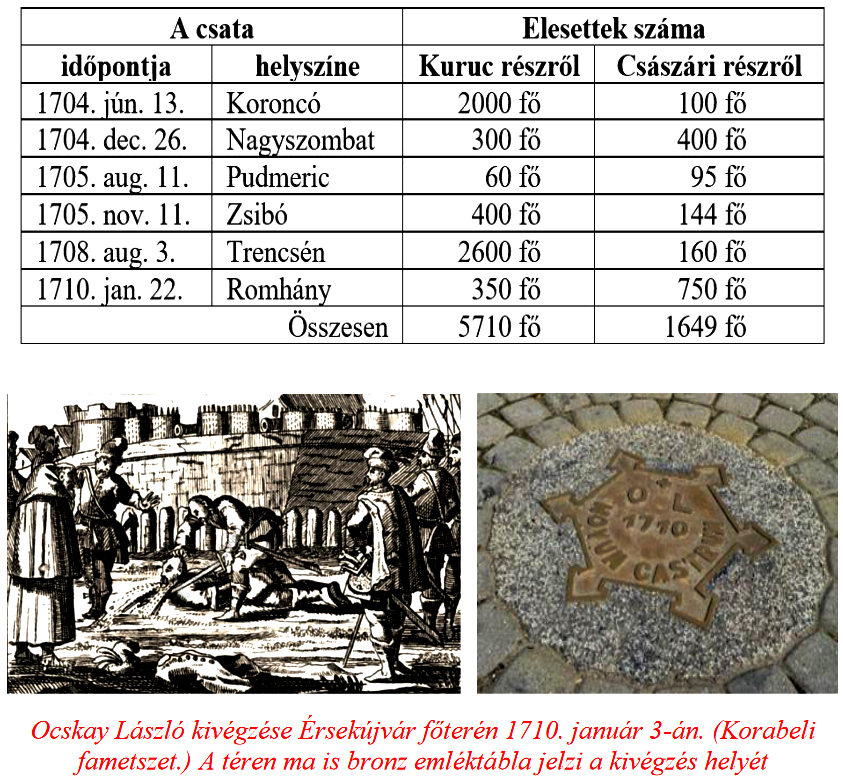
Lieutenant Ádám Jávorka of Archduke Cújvár decided to take revenge for Ocskayn's betrayal, so he used all tricks and tricks to capture him alive. He spied where Ocskay and his braves were on December 31, 1709, New Year's Day. The next morning, Ocskay, who was leaving the party, was attacked by Ádám Jávorka and his soldiers, who were lying in wait. The escorts were cut down, Ocskay was captured and taken prisoner to Érsekújvár. A court-martial immediately sentenced the traitor to be drawn to the stake first, and then to death by pallos as a mercy.
The balance of the big battles and the smaller ones both favored the Imperials.
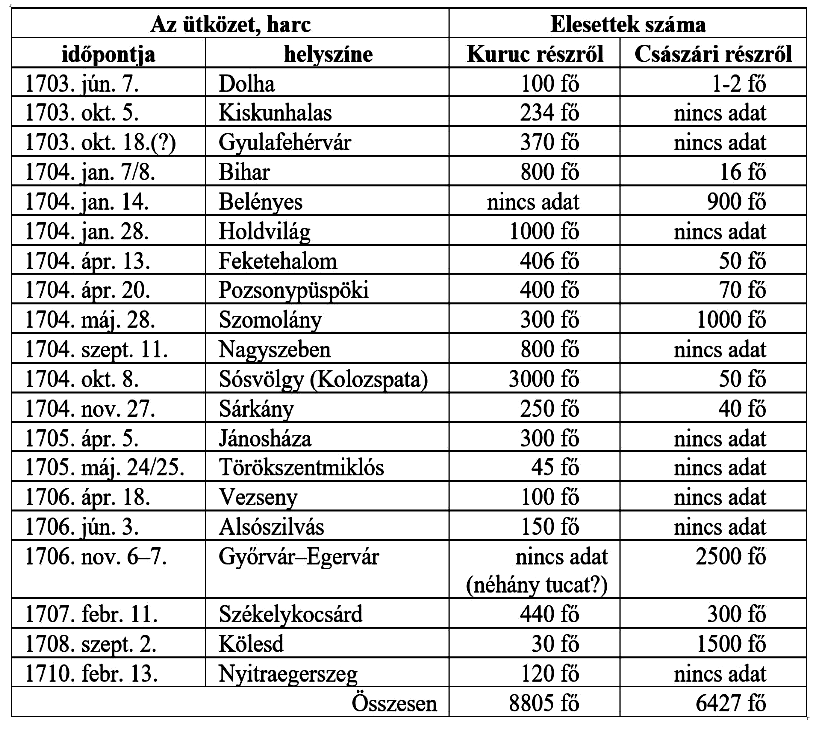
Prince Rákóczi lived through the extremely cold winter of 1708-1709, frozen together with his ragged, starving soldiers. He was lying on the cold ground, and he didn't let the leader's tent be set up either. He worked day and night, identified with his soldiers, and unwaveringly believed in the final victory. In the summer of 1709, he received a letter from the Russian Tsar Péter Nagy, who informed Rákóczi that he had won a victory over the Swedes. The prince thought that Péter I would send him military help, but in the end he had to be disappointed, just like the French Sun King. In September 1709, Vak Bottyán, the legendary Kuruc general, died, which further weakened the Hungarians' chances of victory. The treasury was emptied, and by 1710 Rákóczi's troops had been driven out of most of Transdanubia. The Kuruc leaders were powerless, often engaged in a power struggle against each other, and betrayals and betrayals occurred more and more often. Only Rákóczi was able to inspire his soldiers. Despite this, more and more parts of the country fell into Vienna's hands. The battle near Romhány on January 22, 1710 promised to be the last chance, which the Kurucs won. But by the fact that the kuruks, living in the euphoria of victory, threw themselves on the prey, the labans who organized their ranks turned the final victory to their advantage. The lack of discipline and weak leadership took its toll again.
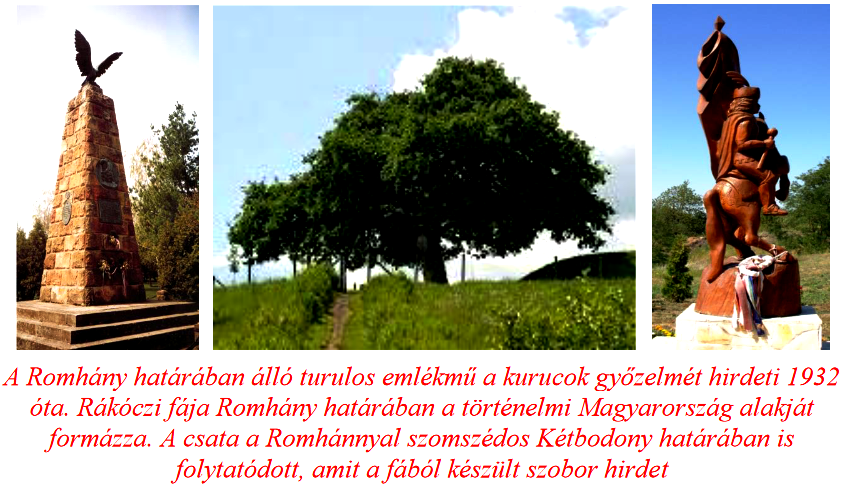
Despite the successful raids, Transdanubia and the Highlands also slowly fell. The situation was no better in the warring European countries participating in the war of succession. József I also faced catastrophic financial bankruptcy, so it was in Vienna's interest to make peace quickly. Rákóczi also knew this, so he tried to continue the fight. In the meantime, the plague epidemic of 1710-1711 was devastating. year cold full, the hunger, the battles. Rákóczi sent Bercsényi to Poland, because the physically and mentally weakened commander-in-chief was already doing more harm than good to the cause. Sándor Károlyi, who replaced Bercsényi, became the Count János Pálffy . In the spring of 1711, Rákóczi, who was returning from Poland, also met Pálffy in the Vaja castle, but the prince was not willing to make any concessions.
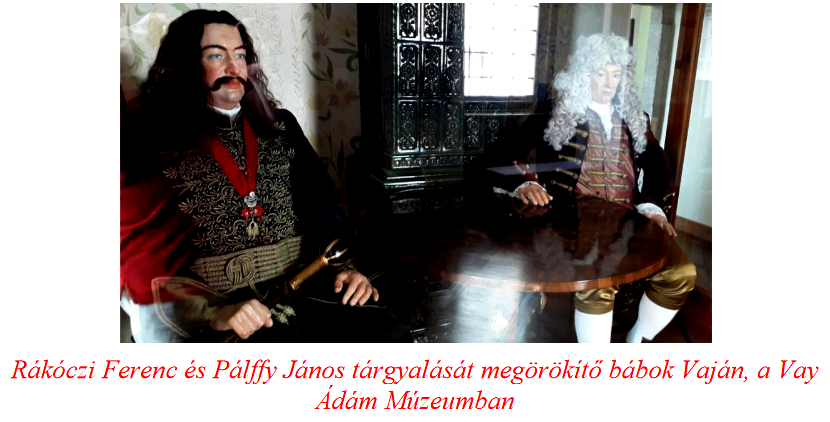
The Peace of Szatmár – 1711
Rákóczi learned that the Russian Tsar Péter I had visited Poland. The prince also went to Warsaw to meet the Russian ruler in person. He entrusted the power to Sándor Károlyi, which meant the continuous management of the country's affairs and the performance of economic, military and political tasks. However, the lord of Szatmár decided to take steps that were against Rákóczi's will. Among other things, he swore an oath to Emperor József , then April 4-6, 1711. convened a meeting in Szatmár between When Rákóczi learned about the Szatmár decision, he declared it illegal. He deprived Count Károlyi of his position as commander-in-chief and issued a proclamation on April 18. He believed in this by supporting the serf soldiers, which was not ineffective, but it was too late. (When Rákóczi left the country on February 21, 1711, he did not think that he would ever be able to return to his beloved country.)

The fact that Emperor József I died on April 17, 1711 could not prevent the conclusion of peace. The court circles tried to hide the news of the death, making peace was more important to them than anything else. The personal interests of Counts Károlyi and Pálffy were also in favor of making peace, so a national assembly was again announced for April 25 in Szatmár. A military inspection was held at the border of Nagymajtény, which is about fifteen kilometers from Szatmár. According to the peace concluded in Szatmár, the guards of the still resisting castles - Huszt, Ungvár, Kővár, Munkács, Kassa - surrendered. On April 30, the 12,000-strong Kuruc army cut down the 149 war flags and swore an oath of allegiance on the Majtény plain. (There was no laying down of arms!) After that, the Kuruc officers and private soldiers left the Majtényi plain with their weapons and went home. On May 1, 1711, the text of the peace document was finalized in Károly and the oath of allegiance was taken to Emperor József, who had been dead for almost two weeks.
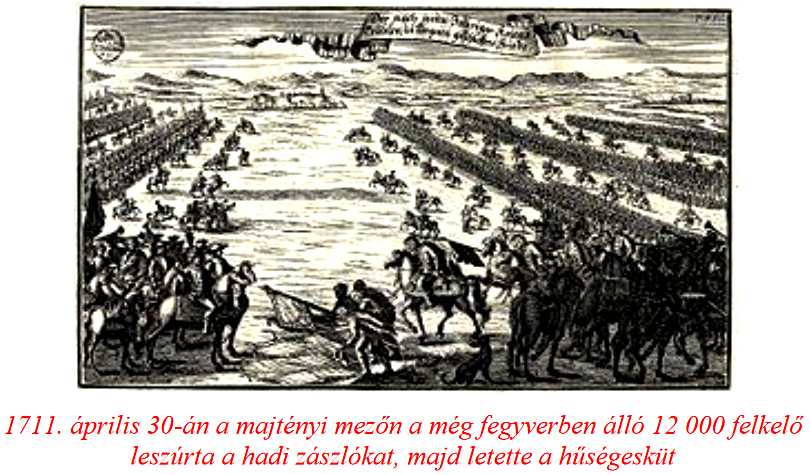
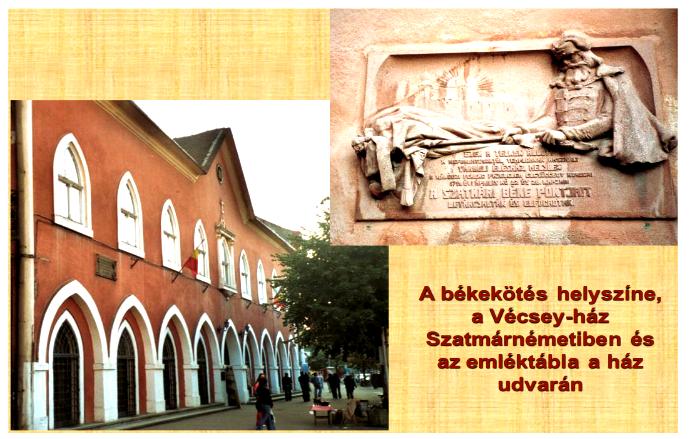
The peace of Szatmári, which Rákóczi described only as: "Not peace, but victory by arms." marked another turning point in Hungarian history. The text of the peace promised the restoration of the constitution, the convening of the parliament, guaranteed religious freedom, and also provided for the deletion of articles from the imperial press that insult Hungarians. They could not create an independent Hungarian army, nor settle the grievances of the serfs.

The peace treaty could even be said to be friendly on the part of Vienna, but the consequences once again broke Hungary's development. After all, the privileges of the order, which Rákóczi wanted to abolish in order to build a modern society, were restored. Whether Sándor Károlyi's decision was a betrayal, or was it the only good decision, is still a cause for debate today. It's a matter of perspective. On the other hand, the fact that Rákóczi's estates were divided among the nobles loyal to the court tells a lot. It should be mentioned that Károlyi received the title of count in 1712, and that he was the first to settle Germans in Hungary.

Author: historian Ferenc Bánfalvi
The parts of the series published so far can be read here: 1., 2., 3., 4., 5., 6., 7., 8., 9., 10., 11., 12., 13., 14., 15., 16., 17., 18., 19., 20., 21., 22., 23., 24,, 25., 26., 27., 28., 29/1.,29/2., 30., 31., 32., 33., 34., 35., 36., 37., 38., 39., 40., 41., 42., 43., 44., 45., 46., 47., 48., 49., 50., 51., 52.


